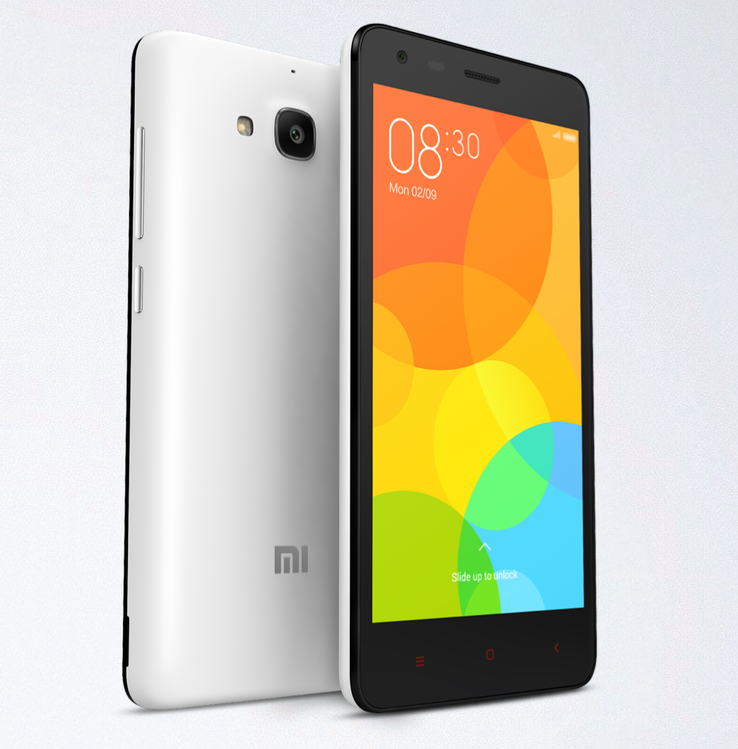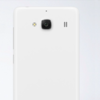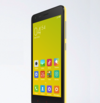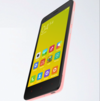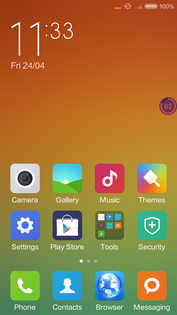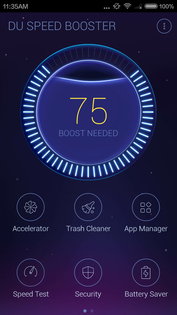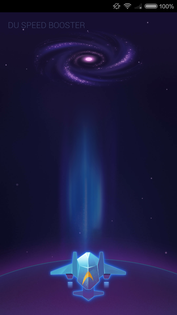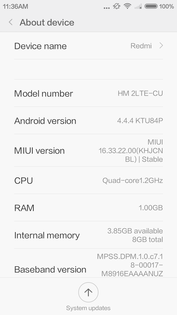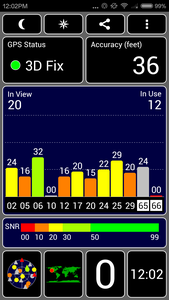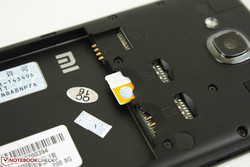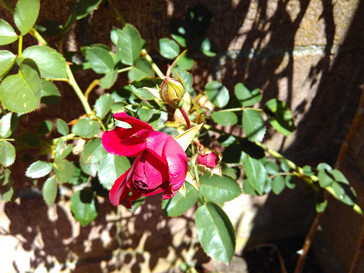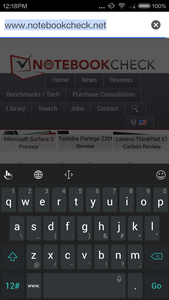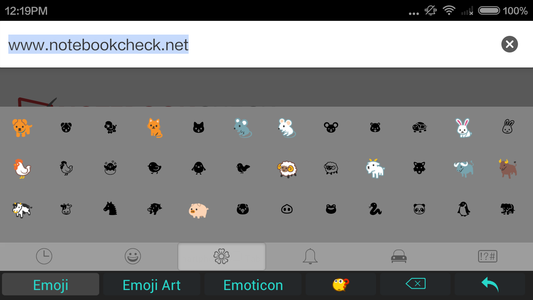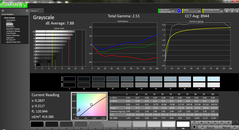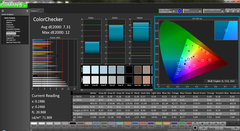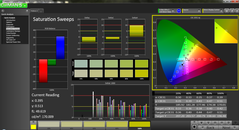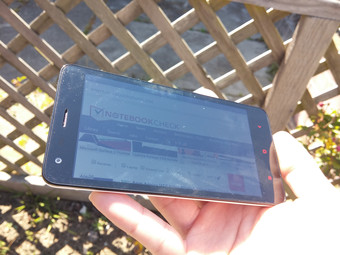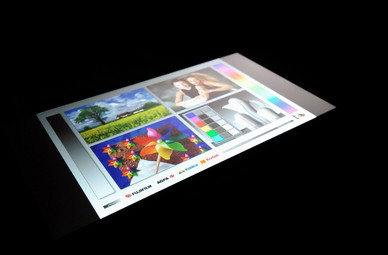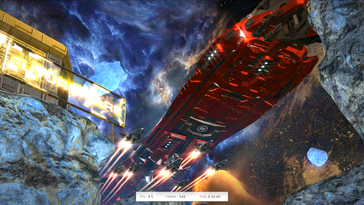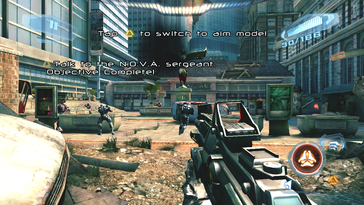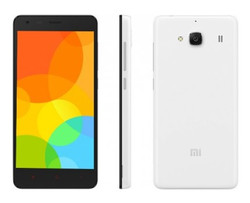Xiaomi Redmi 2 Smartphone Review
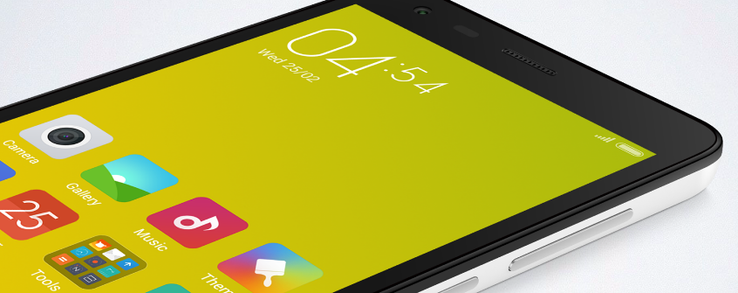
There's a reason why Xiaomi has become the third largest smartphone manufacturer in a market saturated with more familiar household brands like Samsung or Apple. By swooping in from the low-end instead of competing directly with an expensive flagship model, the Chinese manufacturer has scooped up significant market share in Asian and European territories where unsubsidized smartphones are much more common than in the United States. Xiaomi devices have been slowly creeping into the mainstream market and have become a headache for manufacturers like Sony who simply cannot compete at such low prices.
Today's Redmi 2 is an example of a mainstream smartphone for a budget price of about $130. As the successor to last year's Redmi 1S, this model carries a faster Snapdragon 410 SoC while sporting the same size display and a smaller, lighter chassis. We take this model for a quick spin to compare its hardware and performance against other entry-level smartphones like the HTC Desire 510 and Motorola Moto E.
Case
The Redmi 2 shares many physical similarities with the larger 5.5-inch Redmi Note 4G. The dedicated red buttons and positioning of the Power, Volume, and inputs around the edges are identical between the two models as are the smooth matte back covers and Dragontrail Glass front cover. The device feels solid to hold with no weak spots or creaking with applied pressure. On the other hand, the plastic cover feels cheap and could have benefited from a leather or even sandstone texture to better allay that budget design. Aside from the default white, 4 other optional colors (green, yellow, pink, and black) are available as well.
In terms of size, the Xiaomi is quite small compared to other 4.7-inch smartphones especially in length and width where even the iPhone 6 will have a larger footprint. The drawback is a thicker chassis at about 9.4 mm, which is in line with the entry-level Desire 510. Despite this, the small front makes the Redmi 2 relatively more attractive as the display takes up a larger percentage of the surface.
Connectivity
The usual micro-USB 2.0 and 3.5 mm audio port are available. USB On-The-Go (OTG) is supported as well, so users can connect third-party mice and keyboards without any issues. Storage devices can be detected too, though drives in the NTFS format are not compatible. Note that a connected USB cable can potentially feel loose because of the thick removable cover surrounding the port. Removing the cover prior to connecting a USB cable will result in a more secured fit, although this can be a hassle over time.
Removing both the back cover and battery will reveal a MicroSD slot with support up to 32 GB. This is especially welcoming since the internal 8 GB is only sufficient for a handful of apps and music files. In comparison, certain Windows smartphones, like the Trekstor WinPhone 4.7, can support MicroSD cards up to 128 GB.
Unfortunately, Miracast appears to be unavailable on the Redmi 2 despite the feature being standard amongst most newer Android devices. The option is nowhere to be found on the highly customized MIUI 6 skin.
Software
The aforementioned MIUI 6 skin sits on top of the base Android 4.4.4 software. It's a heavy skin with pre-installed apps that include security options, widgets, virus protection, and Speed Booster that users may see as bloatware. Some features can be animation-heavy and buggy as well, such as the RAM booster and its flying spaceship or the Virus Protection feature and its recurring crashes. MIUI 6 is more intrusive compared to other customized skins from competing manufacturers and the Redmi 2 will likely not receive any official Android updates in the future because of it.
Communication & GPS
Supported communication bands include GSM and WCDMA. More specifically, the Redmi 2 officially supports 2G (900/1800 MHz), 3G (Band 1: 2100 MHz, Band 8: 900 MHz), and 4G FDD-LTE (Band 3: 1800 MHz). TDD-LTE (Band 40: 2300 MHz) is supported as well, though this is more commonly used in Asia. We were able to take advantage of AT&T's HSDPA/HSPA network in the U.S..
As for the GPS, the Xiaomi is able to detect available satellites rather quickly with an equally fast time-to-first-fix even without WAN assistance. Accuracy is about 13 to 36 ft indoors (4 to 11 meters) indoors and 10 ft (3 meters) outdoors according to GPS Test. We experienced no dropout or connectivity issues when using the smartphone for navigation purposes on the road. Similarly, its 802.11 b/g/n radio performs without any hiccups.
Telephone & Speech Quality
Both SIM slots accept micro-SIM cards (3FF). If two are inserted, the phone will automatically select which network to use based on call and text history. Interestingly, a SIM card in the second slot will not be detected if there is no SIM card in the first slot.
Call quality during our time with the Xiaomi is average at best. We called a tried-and-true LG G2 on the other end, but the person had heavy static and spotty sound with words frequently cut off even with full bars on both ends. Activating the speakerphone did not dramatically improve quality, either. Sound quality from our listener was a bit better with less static, though the experience was subpar overall.
Cameras
The rear camera works well outdoors for still or macro shots. However, it doesn't capture as much detail as we would have liked from an 8 MP camera and colors appear muddier and more saturated compared to pictures taken with more popular mainstream smartphones. On the plus side, the Xiaomi avoids heavy purple fringing that is common on cheap smartphone cameras and works better than expected in low-light situations. The latter may be explained by its relatively powerful LED Flash and backside illumination (BSI) technology incorporated specifically for better nighttime photos.
We should note that the included camera app is unfortunately buggy on our test model. While the majority of features are accessible, some will crash the app each and every time. This means users cannot change the megapixel setting of the rear camera or shoot video in anything other than the default 720p30 setting. Thus, a third party camera app may be necessary.
Accessories & Warranty
Xiaomi throws in very little extras out-of-the-box. The standard warranty card, micro-USB cable, and AC adapter are all there, but there are no protective cases, extra screen protectors, or even earphones.
Gearbest provides a 45-day Money Back Guarantee with a 15 percent restocking fee. The fee can be waived if the smartphone arrives faulty, but the buyer must pay for shipping either way. Repairs are accepted if the item is still within the 12-month warranty period.
Input Devices & Interface
Cheap smartphones can be either hit or miss regarding touchscreen responsiveness and we're happy to report that the Redmi 2 doesn't suffer from any significant input or accuracy issues. The screen is equally responsive around the edges and corners as it is towards the center, which isn't always true on some inexpensive models like the Verykool s5511. Text output is quick enough to keep up with fast touch-typists and both Swype and auto-correct are enabled by default.
The included keyboard software from TouchPal provides plenty of built-in features and emoticons, although some users may see this as bloatware as it is only a Trial version of the software. While it has all the basic options from the Vanilla Android keyboard and more, digging deeper into the software will reveal a number of locked features reserved only for the Premium version of TouchPal.
Display
The 4.7-inch IPS display offers the same 720p resolution as most other modern budget smartphones, which is an upgrade from the lower 800 x 480 pixels of older devices. Its DPI of 312 proves to be sufficient for browsing and everyday use. Perhaps more notably, the screen uses the same One Glass Solution (OGS) technology as the iPhone, which reduces the thickness of the glass that sits on top of the display. This allows the screen to really "pop" with colors and images, especially when compared to entry-level models that do not take advantage of the same technology.
Display brightness is better than average for an inexpensive model at about 430 nits with a high contrast of just over 600:1. Budget smartphones tend to hover around 300 nits while flagship models can be as high as 700 nits as is the case with the Sony Xperia Z3.
| |||||||||||||||||||||||||
Brightness Distribution: 89 %
Center on Battery: 421.4 cd/m²
Contrast: 656:1 (Black: 0.642 cd/m²)
ΔE ColorChecker Calman: 7.31 | ∀{0.5-29.43 Ø4.78}
ΔE Greyscale Calman: 7.88 | ∀{0.09-98 Ø5}
Gamma: 2.51
CCT: 8944 K
| Xiaomi Redmi 2 Adreno 306, 410 MSM8916, 8 GB SSD | Trekstor WinPhone 4.7 HD Adreno 302, 200 MSM8212, 8 GB eMMC Flash | HTC Desire 510 Adreno 306, 410 MSM8916, 8 GB SSD | Nokia Lumia 735 Adreno 305, 400 MSM8926, 8 GB eMMC Flash | Motorola Moto E 2. Gen 2015 Adreno 306, 410 MSM8916, 8 GB eMMC Flash | Apple iPhone 6 PowerVR GX6450, A8, 128 GB eMMC Flash | |
|---|---|---|---|---|---|---|
| Screen | -6% | -15% | 10% | 20% | 24% | |
| Brightness middle (cd/m²) | 421.4 | 418 -1% | 355 -16% | 291 -31% | 217 -49% | 520 23% |
| Brightness (cd/m²) | 429 | 420 -2% | 371 -14% | 293 -32% | 204 -52% | 511 19% |
| Brightness Distribution (%) | 89 | 89 0% | 80 -10% | 93 4% | 55 -38% | 88 -1% |
| Black Level * (cd/m²) | 0.642 | 0.93 -45% | 0.37 42% | 0.15 77% | 0.61 5% | |
| Contrast (:1) | 656 | 449 -32% | 959 46% | 1447 121% | 852 30% | |
| Colorchecker dE 2000 * | 7.31 | 6 18% | 12.13 -66% | 4.04 45% | 4.12 44% | 3.92 46% |
| Greyscale dE 2000 * | 7.88 | 6.36 19% | 14.77 -87% | 2.87 64% | 4.87 38% | 4.33 45% |
| Gamma | 2.51 88% | 2.46 89% | 2.42 91% | 2.49 88% | 2.38 92% | 2.46 89% |
| CCT | 8944 73% | 7974 82% | 17097 38% | 6432 101% | 6019 108% | 7384 88% |
* ... smaller is better
Color analyses against the sRGB standard reveal an inaccurate grayscale due to the cool color temperature and only average color accuracy. Colors become more accurate as saturation levels increase. In general, these results are not uncommon on budget smartphones as seen on the Lumia 735 (inaccurate colors) and Motorola Moto E (inaccurate grayscale).
The data below reflects the "Standard" display option. "Warm" and "Cool" options are available as well with "Warm" providing colors that are easier on the eyes. Two saturation levels, "Brilliant" and "Standard", are available for very slightly deeper colors at the cost of adjusted midtones and contrast.
Outdoor usability is average at maximum display brightness. The glossy display prevents comfortable use as glare will be inevitable. The backlight is barely satisfactory on an overcast day let alone under direct sunlight.
Viewing angles are excellent as expected for an IPS panel. Colors do not degrade dramatically from extreme angles, though apparent brightness may decrease if not looking straight at the screen.
Performance
The quad-core Snapdragon 410 MSM8916 SoC can theoretically run up to 1.4 GHz, although it is underclocked to 1.2 GHz for smartphones like the Redmi 2. When idling, three of the four cores become inactive and the remaining core will run at 800 MHz according to CPU-Z. This particular Snapdragon SoC is a common find on many mainstream smartphones including the Huawei Ascend G7 and Samsung Galaxy Grand Prime.
General performance is in line with the similar Desire 510 and Moto E 2015 according to synthetic benchmarks. Subjectively, system performance is average as launching applications will almost always take a couple of seconds. Similarly, there is a delay when multi-tasking between applications that otherwise wouldn't be there on more powerful smartphones and tablets. Nonetheless, frame skips don't occur too frequently and we are able to scroll through long webpages smoothly for the most part, such as on our own review pages.
| Google V8 Ver. 7 - Google V8 Ver. 7 Score (sort by value) | |
| Xiaomi Redmi 2 | |
| Trekstor WinPhone 4.7 HD | |
| HTC Desire 510 | |
| Nokia Lumia 735 | |
| Motorola Moto E 2. Gen 2015 | |
| HTC One M9 | |
| Octane V2 - Total Score (sort by value) | |
| Xiaomi Redmi 2 | |
| Trekstor WinPhone 4.7 HD | |
| HTC Desire 510 | |
| Nokia Lumia 735 | |
| Motorola Moto E 2. Gen 2015 | |
| Samsung Galaxy S5 | |
| HTC One M9 | |
| Mozilla Kraken 1.1 - Total (sort by value) | |
| Xiaomi Redmi 2 | |
| Trekstor WinPhone 4.7 HD | |
| HTC Desire 510 | |
| Nokia Lumia 735 | |
| Motorola Moto E 2. Gen 2015 | |
| Samsung Galaxy S5 | |
| HTC One M9 | |
| Peacekeeper - --- (sort by value) | |
| Xiaomi Redmi 2 | |
| HTC Desire 510 | |
| Nokia Lumia 735 | |
| Samsung Galaxy S5 | |
| HTC One M9 | |
| PCMark for Android - Work performance score (sort by value) | |
| Xiaomi Redmi 2 | |
| HTC One M9 | |
| AndEBench | |
| Java (sort by value) | |
| Xiaomi Redmi 2 | |
| HTC Desire 510 | |
| Samsung Galaxy S5 | |
| HTC One M9 | |
| Native (sort by value) | |
| Xiaomi Redmi 2 | |
| HTC Desire 510 | |
| Samsung Galaxy S5 | |
| HTC One M9 | |
| Epic Citadel | |
| Ultra High Quality (sort by value) | |
| Xiaomi Redmi 2 | |
| HTC Desire 510 | |
| Samsung Galaxy S5 | |
| HTC One M9 | |
| High Quality (sort by value) | |
| Xiaomi Redmi 2 | |
| HTC Desire 510 | |
| Samsung Galaxy S5 | |
| High Performance (sort by value) | |
| Xiaomi Redmi 2 | |
| HTC Desire 510 | |
| Samsung Galaxy S5 | |
* ... smaller is better
Games
The Adreno 306 is the integrated graphics processor of choice on Snapdragon 410 SoCs. Performance is on the lower end of the spectrum as the GPU focuses on reduced power consumption instead of improved graphics power over its immediate Adreno 305 predecessor. Raw performance is about 30 percent higher than the old Tegra 3 according to 3DMark Ice Storm, but demanding games like N.O.V.A. 3 still play well below 30 FPS. More popular 2D titles like Angry Birds or Candy Crush will run without issues.
Emissions
Temperature
Surface temperatures when idle average just under 30 degrees C on both the front and back. Prolonged browsing will increase temperatures significantly, especially if gaming. We were able to record a maximum temperature of 44 degrees near the earpiece whilst running a stress test for over half an hour. Users will feel this end of the smartphone warm up much more quickly than the opposite end. For day to day use, however, the temperature rise should not negatively affect user experience.
The Motorola Moto E, which sports the same Snapdragon SoC as our Xiaomi, experiences notably lower surface temperatures under similar conditions.
(±) The maximum temperature on the upper side is 41 °C / 106 F, compared to the average of 35.2 °C / 95 F, ranging from 21.9 to 247 °C for the class Smartphone.
(±) The bottom heats up to a maximum of 44.2 °C / 112 F, compared to the average of 34 °C / 93 F
(+) In idle usage, the average temperature for the upper side is 29.3 °C / 85 F, compared to the device average of 32.9 °C / 91 F.
Speaker
The speakerphone is on the rear of the device adjacent to the camera. Sound quality is very good considering the size and inexpensive price. Music playback feels balanced with no static on higher volume settings. Bass could be better of course, but the Xiaomi avoids the "tin can" quality that many budget devices suffer from.
Battery Life
The removable 2200 mAh (8.61 Wh) Li-ion battery pack is similar in size to its competitors such as the Desire 510 (7.98 Wh), Xperia M2 (8.39 Wh), and Lumia 735 (8.4 Wh). Thus, battery life should be similar in most cases, though the Redmi 2 comes out slightly below in our testing. Users can expect a little under 6 hours of constant use according to our standard WiFi test at a brightness of 150 nits (a setting of approximately 60 percent). Under the most demanding of conditions (i.e., maximum brightness and processing load with all wireless radios active), users will get at least 3.5 hours of use. This may be sufficient for a typical workday while heavy users may want to carry a secondary battery just in case.
| Xiaomi Redmi 2 | Trekstor WinPhone 4.7 HD | HTC Desire 510 | Nokia Lumia 735 | Sony Xperia M2 | Motorola Moto E 2. Gen 2015 | |
|---|---|---|---|---|---|---|
| Battery runtime | -12% | 21% | 22% | 41% | 37% | |
| Reader / Idle (h) | 17.7 | 21.3 20% | 18.5 5% | 25.6 45% | 26.6 50% | |
| WiFi v1.3 (h) | 5.9 | 5.2 -12% | 8.4 42% | |||
| Load (h) | 3.6 | 4.4 22% | 5 39% | 4.9 36% | 4.3 19% | |
| WiFi (h) | 9.5 | 12.7 | 11.4 |
Pros
Cons
Verdict
The Redmi 2 has a lot going for it, including its impressive glass display, dual SIM support with 4G, responsive touchscreen, and an inexpensive price of $130 at Gearbest. It performs reasonably well in almost all core categories, which is not easy to say for smartphones in this price range.
The major misstep here is in its call quality, which is spotty from our experience even under ideal reception conditions. The bloatware is real as well and we recommend removing some of them as they have a tendency to crash. CDMA users are also out of luck due to unsupported bands. The Sharp Aquos Crystal offers similar performance for a smaller chassis size, larger 5-inch screen, WiFi calling, and more stable apps for those who are tied to CDMA networks.
It performs reasonably well in almost all core categories, which is not easy to say for smartphones in this price range.
Xiaomi Redmi 2
- 04/27/2015 v4 (old)
Allen Ngo




